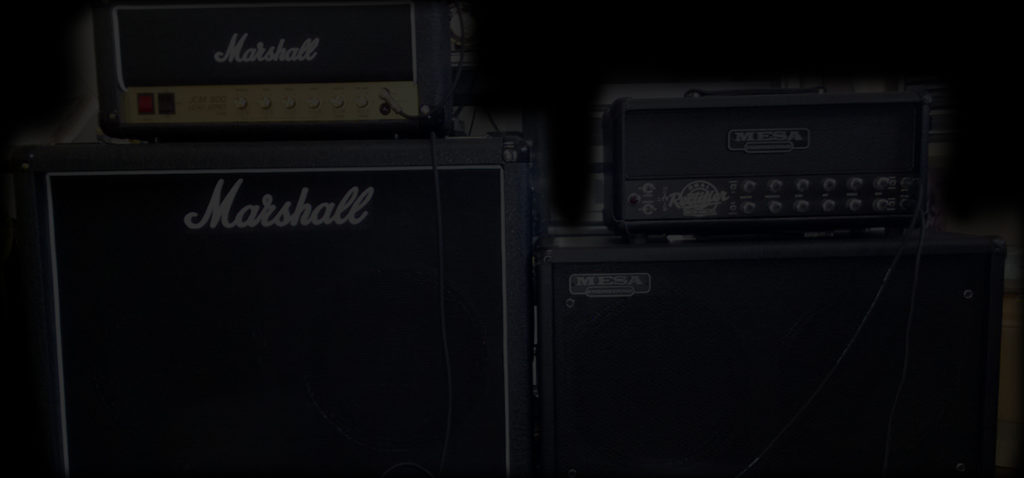
Guitar Nerd Report: In my quest for tone with the new rig, I am starting with three basic sounds – the sound I dial in to the single channel of the Marshall (SC20H) plus the clean and dirty channels on the Boogie (Recto Verb 25). I switch between the amps with an ABY switch which also allows me to run the amps together as my default setting.
My additional tone shaping tools are a TC Electronic HyperGravity compressor, a TC Electronic Spark Mini booster, and my faithful Ibanez TS9DX Tube Screamer overdrive. I used this pedal in classic TS9 mode with the old rig to push the front end of the Road King a little bit, so I had the drive setting way down and the level a tad above unity. Used this way, it also came in handy for a subtle boost when needed. With this new rig, it’s serving a different purpose, and giving me some cool options with both amps. With the pedal off and the Boogie on the clean channel, I get a lovely clean sound from single coil pickups, and a touch of grit from the Marshall when I switch to a humbucker. Kick the pedal in, and the Marshall becomes the dominant source of dirt while the Boogie’s clean sound turns to blues crunch. It’s an awesome setting for single coil or humbucking pickups, and I have been pleasantly surprised by how many useful tones I have found for both rhythm and solos before even switching in the dirty channel of the Boogie. The little Spark booster has proven to be a dark horse in the tone stakes, providing a warming push to the front end of both amps as well as its intended purpose of boosting clean solos. A thing I will mention here is the difference in available tones that happens when the gain is dailled back a bit. I’m finding some awesome sounds with the single coil pickups in the GG6FG and SX6 without any annoying noise so far, and the humbucking pickups are still solid but more defined, something I think is going to suit a two-guitar band.
However, I digress. When I do switch to channel 2 on the Boogie, things get a bit heavier. So far, whenever I switch to the dirty channel on the Boogie, I kick in the TS9 to push the Marshall into distortion mode to create a creamy blend of UK and US overdrive. I have cut back a fair bit of gain on the Boogie, but it still has that Recto grunt that makes it such a great rock amp. Blending that with some traditional blues tones from the Marshall is an experiment that, I’m happy to say, turned out very well indeed. All my heavier rhythms and solo sounds come from this setting, changing pickups and guitars to suit. My onstage reverb comes from an onboard spring reverb on the Boogie (with separate controls for each channel) and a TC Electronic Hall Of Fame 2 Mini reverb pedal that sits on top of the Marshall, receiving the signal from the pedal board and patching into the input of the amp.
I love my cabinets – the fully enclosed Marshall 1936 212 cab is tall for a 212, with the speaker baffle angled slightly back, thus tilting the speakers up a bit. The extra size enhances the low end without being boomy, which is something I love about 212 cabinets. The Boogie 212 cab is a 3/4 back design that enhances cut and sparkle while taming the massive Recto low end. It worked beautifully with the Road King and is perfect in this rig. There are even a number of useful ways I can configure everything, so there is some fun yet to be had. I’ll expand on that in another post. For now, I have an amazing little rig that gives me all the tones I need, and then some.
I should point out that so far I have been running the amps on their minimum wattages (5w for the Marshall, 10w for the Boogie) and the masters down low, so some of the amps’ characteristics will definitely change with the extra headroom. I’ll let you know my observations when I open the rig up in a rehearsal studio.
